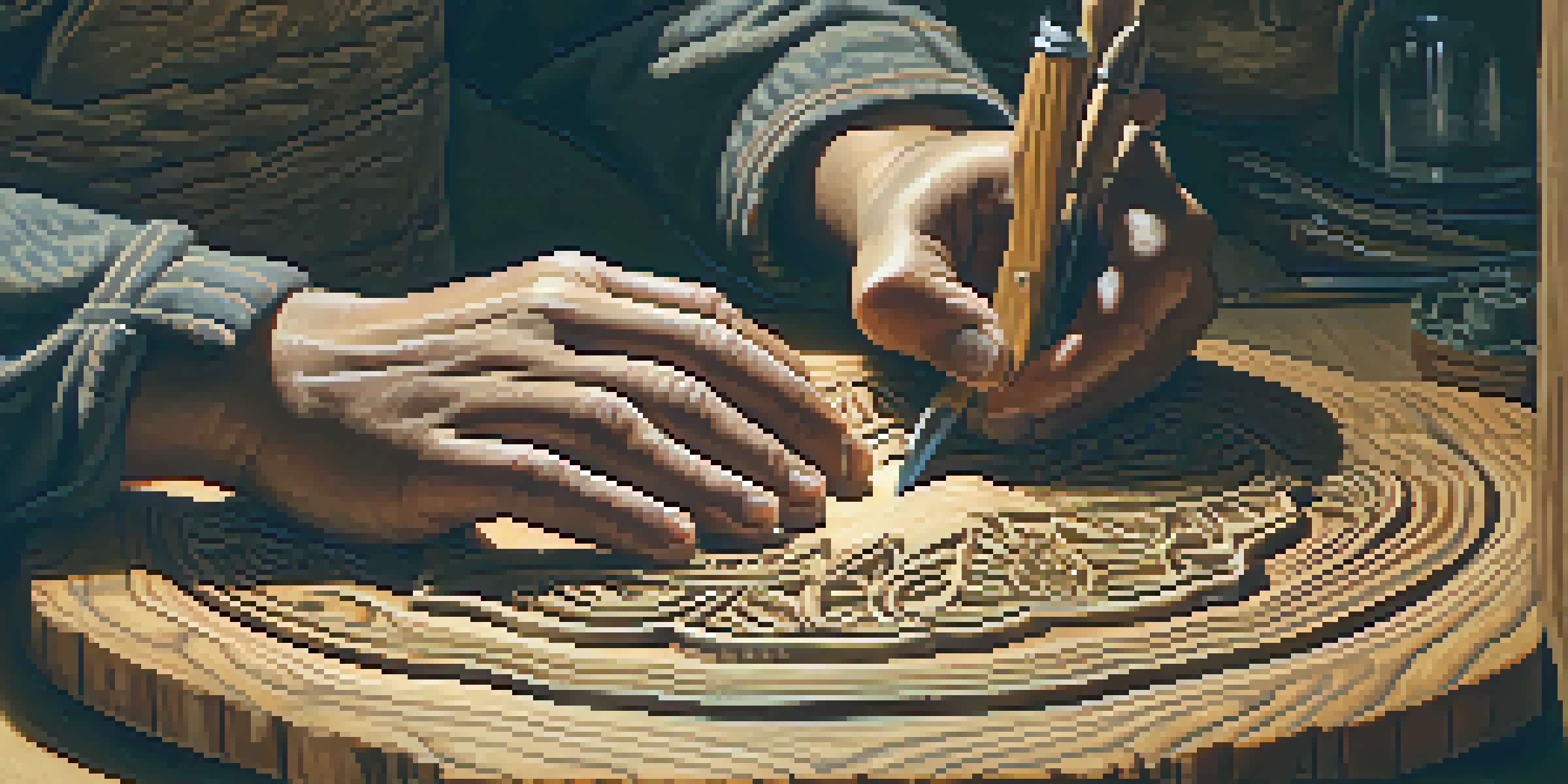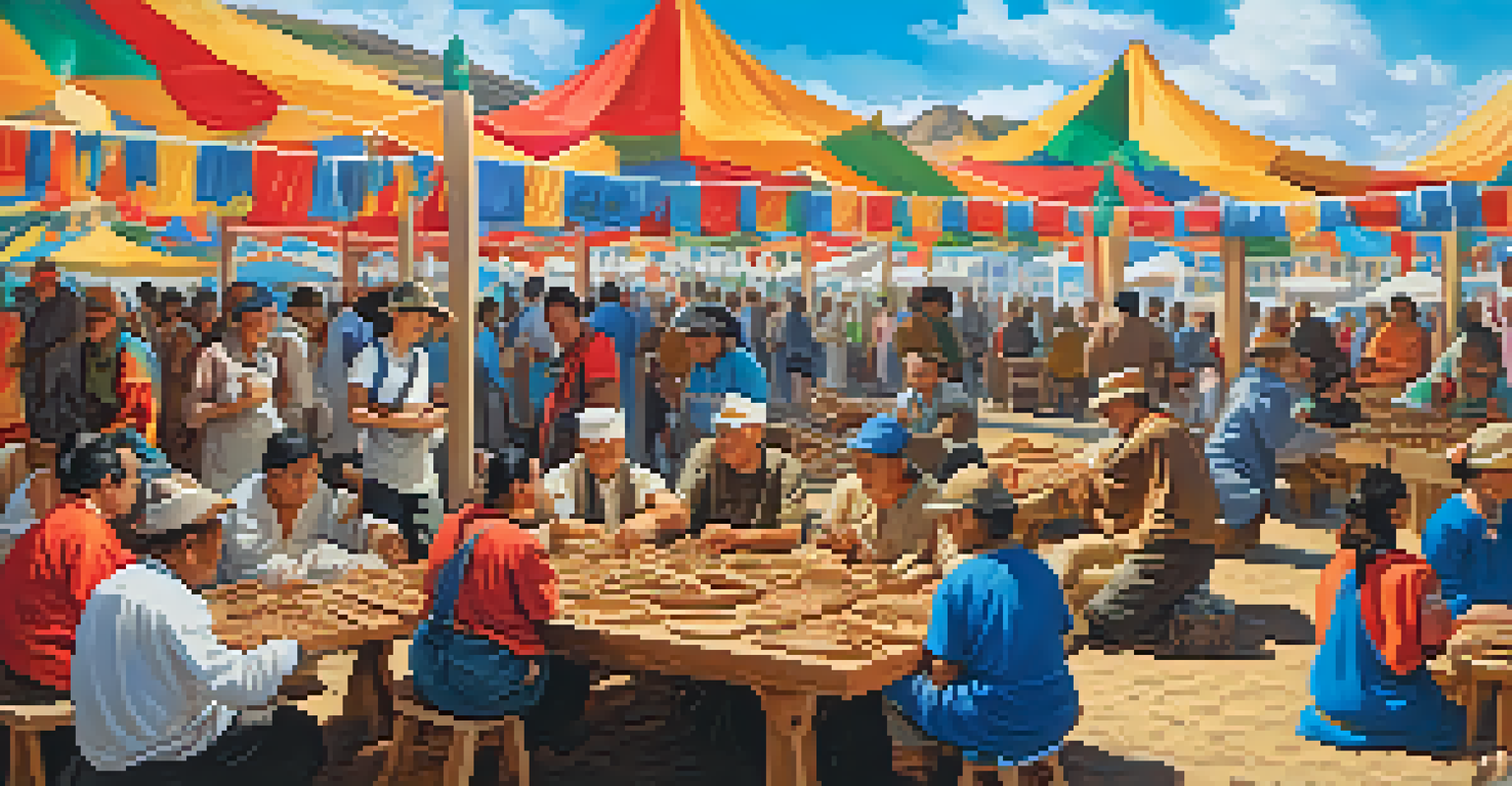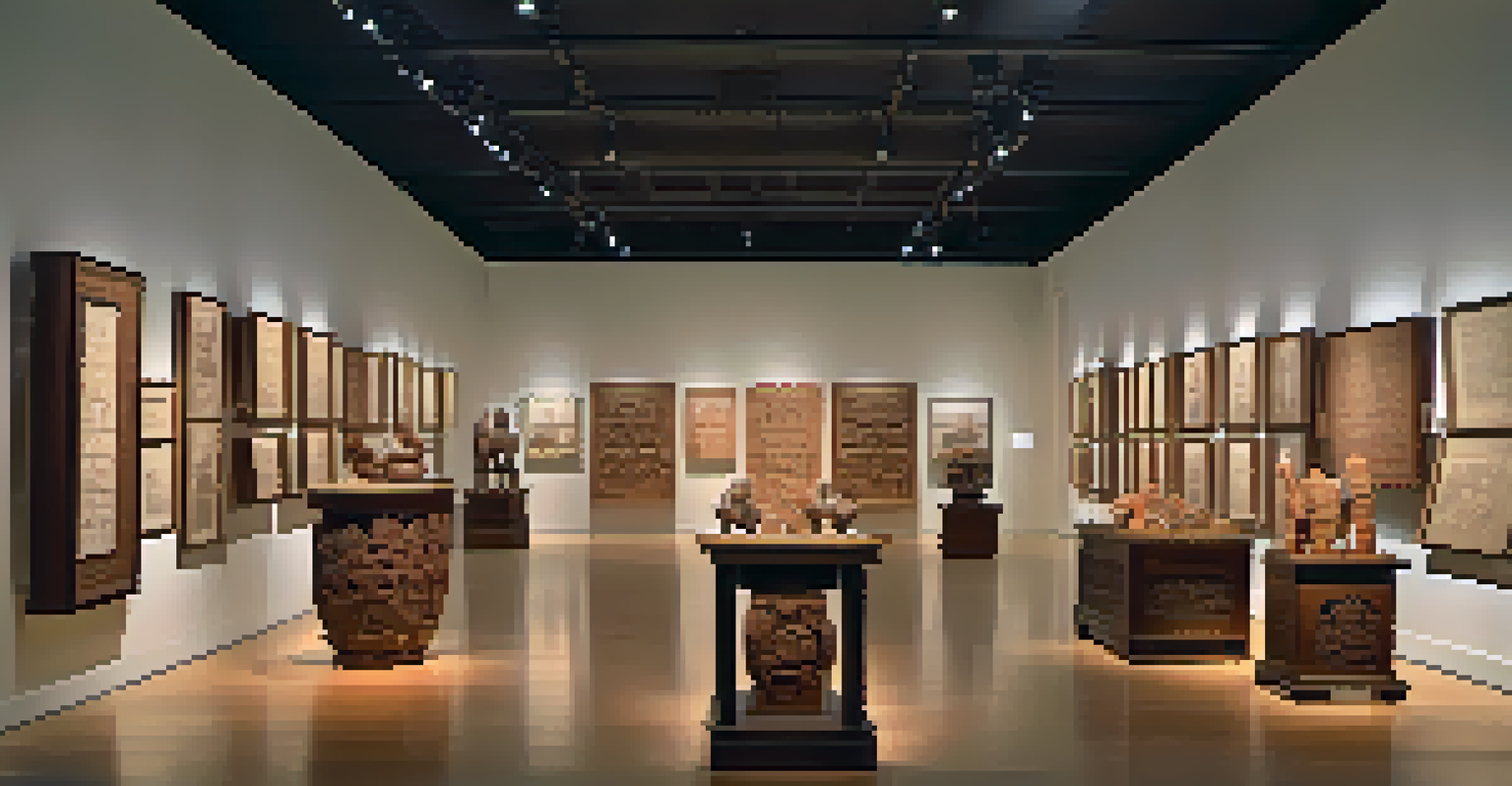Reviving Lost Carving Techniques to Preserve Cultural Identity

Understanding the Importance of Cultural Identity
Cultural identity shapes who we are, influencing our values, beliefs, and traditions. It acts as a thread connecting past generations with the present and future. By preserving cultural practices, such as traditional carving, we honor our ancestors and ensure their stories live on.
Culture is the widening of the mind and of the spirit.
When we lose touch with these practices, we risk diluting our unique identities. Carving techniques, often passed down through generations, encapsulate the artistry and history of a culture. They serve as tangible reminders of the values and experiences that define us.
Thus, reviving lost carving techniques becomes a crucial step in safeguarding cultural identity. By reintegrating these methods into our communities, we can create a vibrant tapestry of traditions that enriches our lives and connects us to our heritage.
The Decline of Traditional Carving Techniques
The rise of modern technology and mass production has led to a decline in traditional carving techniques. Many artisans find it challenging to compete with cheaper, factory-made alternatives. As a result, the unique craftsmanship and the stories behind these works are at risk of disappearing.

Additionally, urbanization and changing lifestyles have shifted focus away from traditional crafts. Younger generations may not see the value in learning these skills, leading to a generational gap in knowledge. This gap threatens the continuation of cultural practices that have been cherished for centuries.
Cultural Identity Shapes Us
Cultural identity influences our values and traditions, connecting us to our past and enriching our lives.
Without intentional efforts to revive these techniques, we may lose not only the skill but also the cultural narratives tied to them. It’s essential to recognize that preserving these methods is more than just maintaining a craft; it’s about preserving our cultural heritage.
Initiatives to Revive Lost Carving Techniques
Various organizations and artisans are stepping up to revive lost carving techniques. Workshops and community programs are being established to teach the skills to younger generations. These initiatives not only pass on the techniques but also foster a deeper appreciation for the cultural significance behind each piece.
Tradition is not the worship of ashes, but the preservation of fire.
For instance, local museums might host exhibitions showcasing traditional carvings, offering hands-on experiences for visitors. This interactive approach helps demystify the art of carving, making it accessible and engaging for everyone. Through these initiatives, communities can reconnect with their roots.
Furthermore, collaborations between artisans and schools can introduce students to traditional carving. By integrating these techniques into educational curricula, we can inspire a new generation to appreciate and carry on the craft.
The Role of Technology in Preservation
While technology has contributed to the decline of traditional carving, it can also play a pivotal role in its revival. Digital platforms allow artisans to showcase their work, reaching audiences far beyond their local communities. This exposure can spark interest and appreciation for traditional techniques.
Online courses and tutorials provide a convenient way for enthusiasts to learn and practice these skills at their own pace. Social media platforms can highlight the stories behind the crafts, connecting artisans with potential customers and supporters. This modern twist creates a bridge between the old and new.
Reviving Carving Techniques
Efforts to revive traditional carving techniques are essential for preserving cultural heritage and storytelling.
Additionally, 3D printing technology can be utilized to replicate intricate designs, preserving the essence of traditional carvings while making them more accessible. By embracing technology, we can find innovative ways to keep cultural practices alive in a rapidly changing world.
Community Engagement and Support
Community engagement is vital in the effort to revive lost carving techniques. Local artisans often rely on support from their communities to thrive. When people engage with and promote traditional crafts, it fosters a sense of pride and belonging.
Organizing events, such as carving festivals or exhibitions, can showcase local talent and educate the public about the importance of these techniques. Such gatherings create opportunities for dialogue between artisans and community members, allowing for the sharing of knowledge and experiences.
Moreover, supporting local artisans by purchasing their work can help sustain these traditional practices. When communities invest in their cultural identity, they not only help preserve their heritage but also strengthen their social fabric.
Stories Behind the Carvings
Every carving has a story to tell, often reflecting the history and values of the culture it represents. These narratives add depth to the art, transforming it from mere decoration into a powerful expression of identity. By understanding the stories behind the carvings, we can appreciate their significance on a deeper level.
For instance, a carved piece may symbolize a significant event or convey a moral lesson. Such stories often resonate with the community, reinforcing shared beliefs and values. When these narratives are lost, so too is a vital aspect of cultural identity.
Community Support is Key
Community engagement and support for local artisans are vital in sustaining traditional carving practices and cultural identity.
Reviving traditional carving techniques allows us to reconnect with these stories. As artisans reintroduce their work to the community, they can also share the histories that inspired them, fostering a richer understanding of cultural heritage.
The Future of Cultural Carving Techniques
Looking ahead, the future of cultural carving techniques hinges on our commitment to preservation and innovation. By actively engaging with these practices, we can ensure they remain relevant in contemporary society. This future relies on a collaborative effort from artisans, communities, and cultural organizations.
Educational initiatives play a crucial role in this endeavor. By integrating traditional carving into arts programs, we can inspire a new generation to appreciate and practice these techniques. Encouraging creativity and exploration will help keep the art form alive.

Ultimately, the revival of lost carving techniques is about more than just preserving a craft; it's about celebrating our heritage and ensuring that future generations can connect with their cultural identity. By working together, we can create a lasting impact that honors the past while embracing the future.